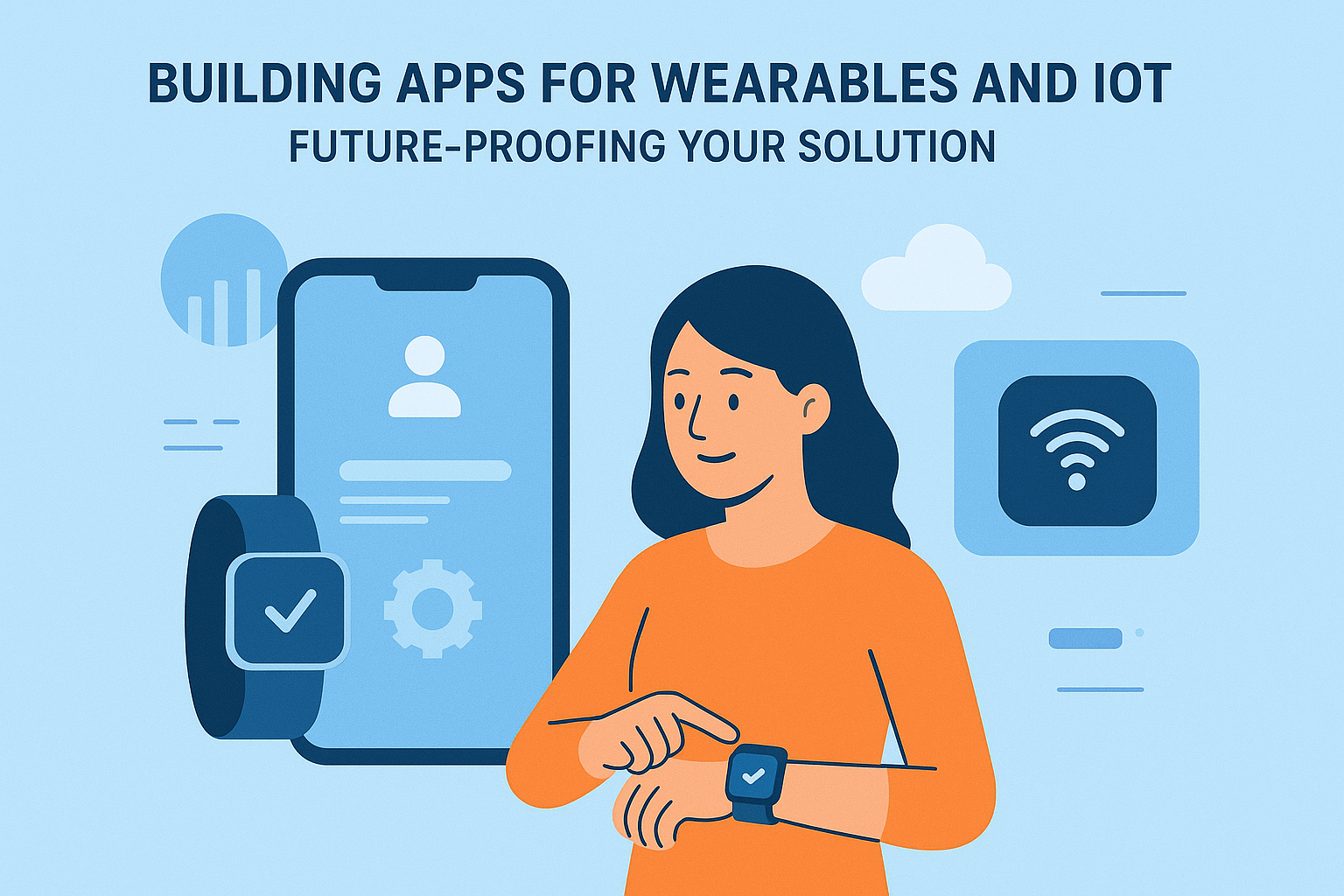Building Apps for Wearables and IoT: Future-Proofing Your Solution

The convergence of wearable technology and the Internet of Things (IoT) is reshaping how we interact with the digital world. From smartwatches monitoring our health to industrial sensors optimizing factory floors, these connected devices are becoming integral to both consumer and enterprise landscapes. As developers, building applications for this ecosystem requires a forward-thinking approach that accounts for rapid technological evolution, diverse hardware constraints, and emerging use cases.
Understanding the Wearables and IoT Landscape
The wearables and IoT market is experiencing explosive growth. Smartwatches, fitness trackers, smart rings, AR glasses, and medical wearables are just the tip of the iceberg. Meanwhile, IoT extends into smart homes, connected vehicles, industrial equipment, and entire smart cities. Each device category presents unique challenges and opportunities for developers.
What sets these platforms apart from traditional mobile or web development is the emphasis on context-awareness, real-time data processing, and seamless integration across multiple touchpoints. Your application isn't just software—it's part of a larger connected ecosystem where hardware limitations, battery life, and network connectivity play crucial roles.
Key Principles for Future-Proof Development
1️⃣ Design for Resource Constraints
Wearables and IoT devices operate under significant hardware limitations. Processing power, memory, and battery life are precious resources that demand efficient code and thoughtful architecture.
Best practices:
- Implement aggressive data filtering and aggregation at the edge
- Use event-driven architectures to minimize constant polling
- Optimize for low-power modes and background processing
- Cache intelligently to reduce network calls
- Consider progressive enhancement—core functionality should work even under constraints
2️⃣ Embrace Protocol and Platform Agnosticism
The IoT landscape is fragmented with competing standards and protocols. Future-proof applications should be built with flexibility in mind.
Implementation strategies:
- Use abstraction layers for device communication (MQTT, CoAP, HTTP/2, WebSockets)
- Design platform-agnostic APIs that can adapt to different ecosystems
- Implement adapter patterns for easy integration with new protocols
- Stay standards-compliant (Matter, Thread, Bluetooth LE) while remaining flexible
- Build modular architectures that separate business logic from platform-specific code
3️⃣ Prioritize Security and Privacy by Design
With sensitive health data, location tracking, and always-on sensors, security cannot be an afterthought.
Essential security measures:
- Implement end-to-end encryption for data transmission
- Use secure authentication mechanisms (OAuth 2.0, biometrics, hardware-backed keys)
- Minimize data collection—only gather what's necessary
- Build in data anonymization and aggregation capabilities
- Regular security audits and over-the-air update mechanisms
- Comply with regulations (GDPR, HIPAA, CCPA) from day one
4️⃣ Build for Offline-First Experiences
Network connectivity on wearables and IoT devices can be intermittent or limited. Your application must gracefully handle offline scenarios.
Offline-first strategies:
- Local data storage with synchronization when connectivity returns
- Queue-based architectures for action processing
- Conflict resolution strategies for distributed data
- Progressive data loading and background sync
- Clear user feedback about connectivity status
Architectural Patterns for Success
Edge Computing Integration
Move processing closer to where data is generated. Edge computing reduces latency, conserves bandwidth, and enables real-time decision-making.
Microservices and API-First Design
A microservices architecture allows different components of your IoT ecosystem to scale independently. APIs can serve multiple device types, from tiny sensors to smart wearables.
Digital Twin Architecture
Digital twins allow simulation, monitoring, and predictive maintenance without constant device interaction.
Health and Fitness: A Case Study
- Data accuracy and validation with multi-sensor fusion
- Glanceable UIs and haptic feedback
- Adaptive battery optimisation
- Cross-platform synchronisation
Emerging Technologies
- AI and Edge ML for real-time insights
- 5G for ultra-low latency apps
- Voice and conversational interfaces for hands-free usage
Testing and Validation Strategies
- Device diversity and physical validation
- Environmental and stress testing
- Battery and performance profiling
- Network simulation for flaky connections
- Security and penetration testing
Deployment and Maintenance
- OTA updates with rollback and staged rollout
- Monitoring and observability dashboards
- Support for legacy devices with feature flags
The Road Ahead
Embrace interoperability, design for sustainability, focus on human-centric experiences, and maintain adaptability to stay ahead in the wearable and IoT space.
Conclusion
By prioritising resource efficiency, security, offline capabilities, and flexible architecture, you can build future-ready wearable and IoT solutions that scale with the evolving connected ecosystem.
To truly succeed, developers must embrace continuous learning, stay aligned with emerging standards, and maintain a user-first mindset. Regularly updating applications, optimising performance for new hardware, and integrating AI-driven insights will ensure longevity in a rapidly changing industry.
Ultimately, building for wearables and IoT is about crafting solutions that are not only functional but also adaptive, secure, and human-centred. The future is wearable, connected, and intelligent—and the time to build is now.By prioritising resource efficiency, security, offline capabilities, and flexible architecture, you can build future-ready wearable and IoT solutions that scale with the evolving connected ecosystem.
The future is wearable, connected, and intelligent—and the time to build is now.
